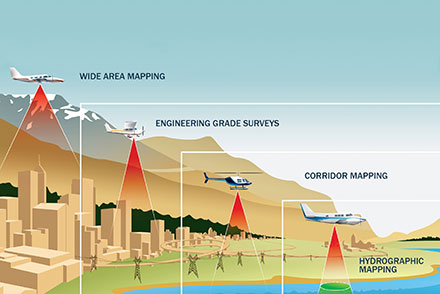Over the last 40+ years, Teledyne Optech has proven that airborne surveying offers many advantages for acquiring spatially-located data across large areas. From an aircraft’s vantage point, sensors capture wide areas of terrain such as cities, forests and farmlands, or long corridors such as power lines, railways and rivers. Airborne sensors also have the speed and flexibility to survey many square kilometers in a single flight, even over rough or inaccessible terrain.

Airborne topo-bathy lidar solution with real-time QC and fast post-processing.
Galaxy Onboard extends the lidar sensor into a full solution that accelerates workflow from airplane to data.
A truly a universal sensor for everything from wide-area mapping to corridor surveys.
Simultaneous high-resolution 3D data and imagery of coastal topography.
Network Surveyor combines unmatched lidar technology with edge processing to deliver actionable data in near real time. Land with data ready for ingestion into the digital twin and identify critical infrastructure risks within hours. Lower operating costs, reduces risk and increases public safety of critical infrastructure assets.
Learn moreAdvanced gyro-stabilization mounts for dynamic leveling of Optech airborne lidar and camera sensors.
Carbon fiber multi-sensor platforms available with pod and belly mount attachments for rotorcraft installations.
Airborne systems can consist of a customized selection of sensors to fit the surveyor’s needs. Optech’s world-famous lidar sensors excel at capturing high-accuracy, high-resolution 3D topographic maps, while our award-winning cameras collect imagery for mapping and engineering surveys. Optech also provides near-infrared and thermal camera sensors for environmental surveying, heat-loss analysis and ISR.
Sensors can be mounted in various types of aircraft, depending on the surveyor’s mission. Optech has installed systems on numerous types of aircraft. These range from airplanes (best-suited to wide-area mapping) to UAVs and helicopters (best-suited for corridor mapping). The sensors are positioned either over a downward-looking port in the aircraft cabin or in an external pod, and are supported by an inertial navigation system with a GNSS antenna for accurately georeferenced data.